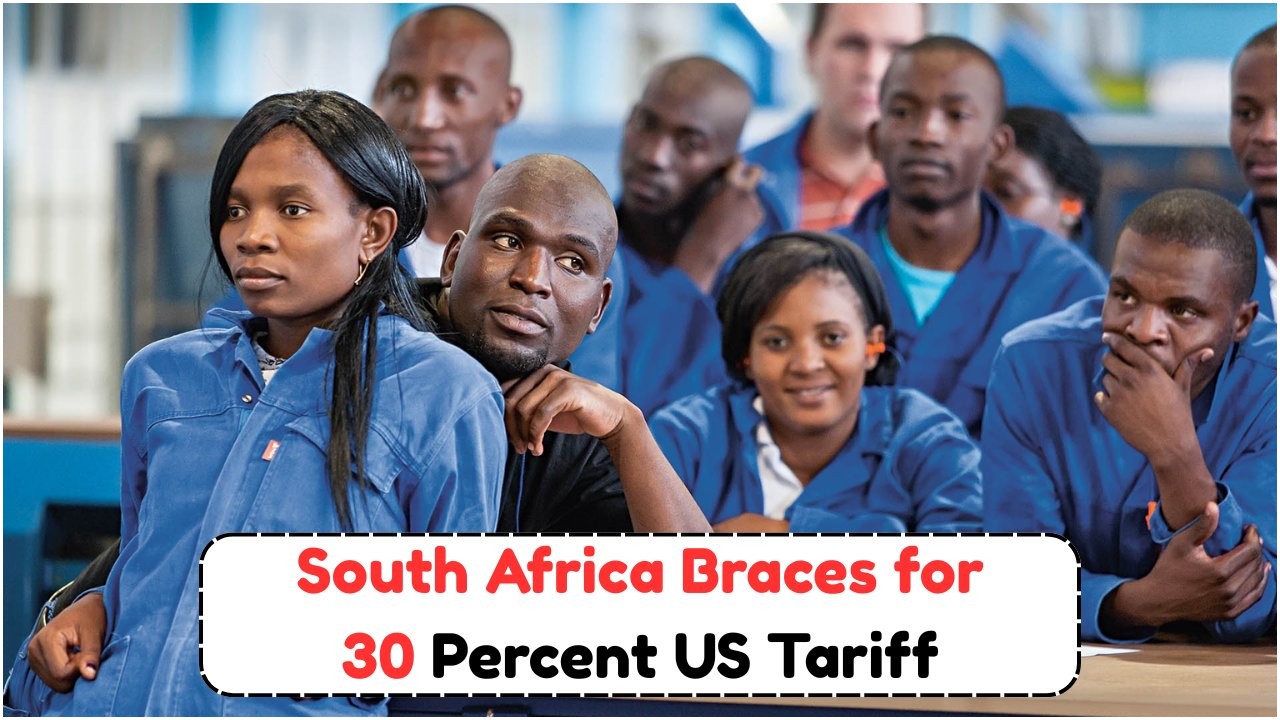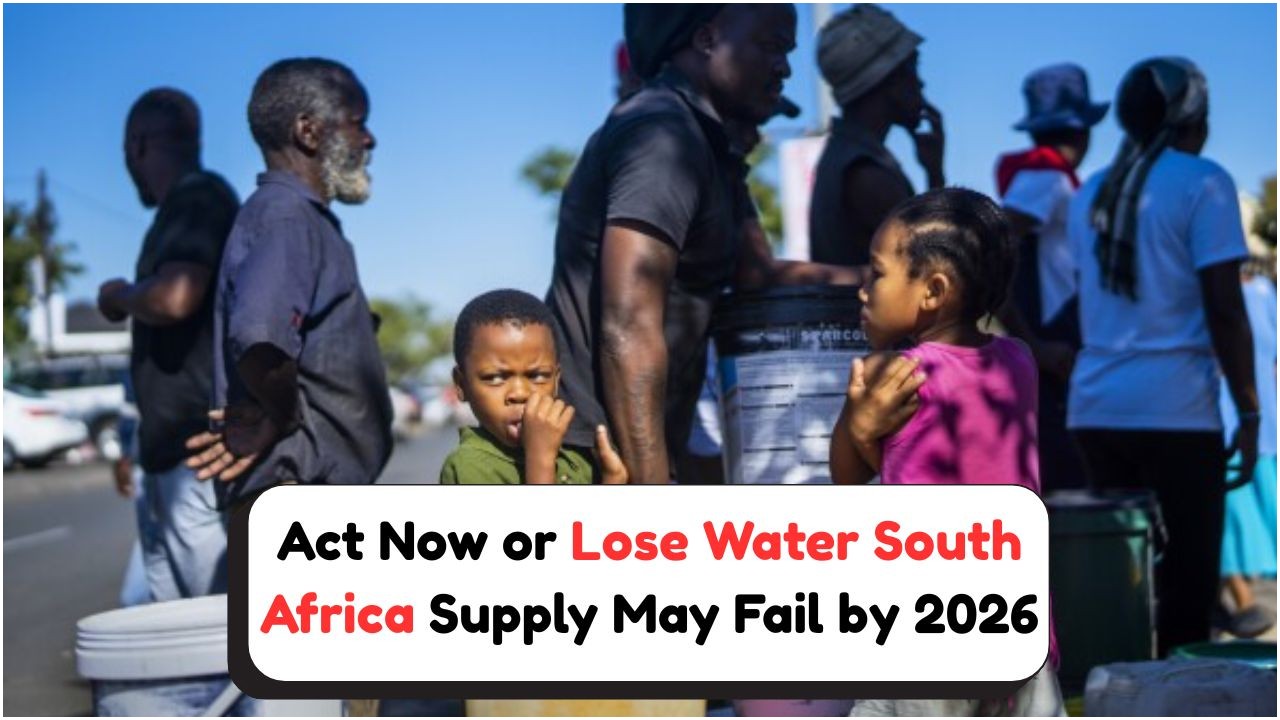US Imposes 30% Tariff on South African Goods Starting August 7: As the US implements a 30% tariff on goods imported from South Africa starting August 7, there are growing concerns about the potential impact on local industries and employment. This move is seen as a significant shift in trade relations, which could have far-reaching consequences for businesses relying on exports to the US. Thousands of South African jobs could be at risk, as industries brace for increased costs and reduced competitiveness in the American market. The new tariff policy is likely to affect various sectors, with stakeholders urging for strategic responses to mitigate the adverse effects.
Impact of US Tariffs on South African Industries
South African industries are gearing up for the challenges posed by the US’s decision to impose a 30% tariff on their goods. This move is expected to affect a diverse range of sectors, including agriculture, manufacturing, and mining, which are crucial to the South African economy. Industry leaders are concerned about the potential loss of market share in the US, which has been a significant export destination for many local businesses.
- Agriculture: The agricultural sector, spearheaded by exports such as citrus and wine, could experience a decline in demand due to the increased costs for US buyers.
- Manufacturing: South African manufacturers exporting machinery and automotive parts face the risk of losing out to competitors from other countries not subjected to similar tariffs.
- Mining: The mining sector, a backbone of the South African economy, may see reduced orders for minerals and metals, impacting revenues significantly.
- Textiles: The textile industry, already under pressure globally, might struggle to compete with cheaper alternatives available to American consumers.
- Technology: Tech companies exporting software and electronic equipment may find it challenging to maintain their foothold in the US market.
- Services: The services sector, although less directly affected, could see indirect impacts through reduced demand for South African services abroad.
- Employment: With industries facing potential revenue losses, there is a looming threat of job cuts, exacerbating South Africa’s unemployment woes.
Challenges Ahead for South African Exporters
| Sector | Impact | Risk Level | Potential Job Losses |
|---|---|---|---|
| Agriculture | Reduced exports | High | Thousands |
| Manufacturing | Increased competition | Medium | Hundreds |
| Mining | Lower mineral demand | High | Thousands |
| Textiles | Price competitiveness | High | Significant |
| Technology | Market access barriers | Medium | Moderate |
| Services | Indirect effects | Low | Minimal |
Strategies to Mitigate Tariff Impacts
In response to the looming tariff challenges, South African businesses and policymakers are exploring various strategies to cushion the blow and secure economic stability. One immediate focus is on diversifying export markets to reduce dependency on the US. By tapping into emerging markets in Asia and Africa, local businesses can create alternative revenue streams.
- Market Diversification: Expanding into new markets such as China and India can help South African exporters maintain their sales volumes.
- Value Addition: Enhancing the value-added component of exports can make South African goods more appealing despite higher prices.
- Production Efficiency: Investing in technology and innovation to improve production efficiency can help offset cost increases due to tariffs.
- Government Support: Seeking governmental assistance in the form of subsidies or incentives can provide much-needed relief to affected sectors.
Focus on Local Market Growth
| Strategy | Description | Benefits | Challenges |
|---|---|---|---|
| Market Diversification | Explore new export destinations | Reduced dependency on US | High initial costs |
| Value Addition | Enhance product offerings | Increased product appeal | Requires investment |
| Production Efficiency | Optimize production processes | Lower operational costs | Technology upgrade needed |
| Government Support | Leverage state assistance | Financial relief | Bureaucratic hurdles |
| Local Market Growth | Boost domestic sales | Job creation | Market saturation risk |
Exploring New Trade Partnerships
As South Africa seeks to navigate the complexities of the new tariff regime, the country is looking to strengthen existing trade partnerships and forge new alliances. This strategic shift aims to ensure that South African goods continue to find a place in the global market, despite the challenges posed by US tariffs.
Potential New Alliances
- BRICS Nations: Deepening ties with BRICS countries, including China, India, and Brazil, can open up new avenues for trade and investment.
- African Continental Free Trade Area (AfCFTA): Leveraging the AfCFTA agreement can enhance intra-African trade and reduce reliance on traditional markets.
- European Union: Strengthening trade relations with the EU can offer opportunities for South African exporters to access a stable and prosperous market.
- Middle Eastern Markets: Exploring opportunities in the Middle East can provide alternative outlets for South African goods.
Role of Government in Supporting Exporters
The South African government plays a crucial role in supporting exporters through this challenging period. By implementing favorable trade policies and providing financial assistance, the government can help businesses remain competitive and mitigate the impact of US tariffs.
- Trade Negotiations: Engaging in diplomatic efforts to negotiate better trade terms can alleviate some of the pressures faced by exporters.
- Export Incentives: Offering incentives such as tax breaks and grants can encourage exporters to explore new markets and innovate their offerings.
- Infrastructure Development: Investing in infrastructure can enhance the efficiency of supply chains, reducing costs for exporters.
Collaborative Efforts
| Government Role | Action | Impact | Challenges |
|---|---|---|---|
| Trade Negotiations | Improve trade terms | Reduced tariffs | Complex negotiations |
| Export Incentives | Provide financial aid | Increased competitiveness | Budget constraints |
| Infrastructure Development | Upgrade facilities | Efficient logistics | High cost |
| Policy Support | Implement favorable policies | Boost exports | Requires coordination |
| Public-Private Partnerships | Collaborate with industry | Innovative solutions | Alignment of interests |
FAQ Section
What is the impact of the US tariffs on South African goods?
The tariffs are expected to increase costs for US buyers, affecting demand for South African exports and potentially leading to job losses.
Which sectors are most affected by the US tariffs?
Key sectors include agriculture, manufacturing, mining, textiles, and technology, all facing increased competition and potential revenue losses.
How can South African exporters mitigate the impact of tariffs?
Strategies include market diversification, enhancing value addition, improving production efficiency, and seeking government support.
What role does the government play in supporting exporters?
The government can assist through trade negotiations, export incentives, infrastructure development, and favorable policies to boost competitiveness.
Are there new markets South Africa can explore?
Yes, potential markets include BRICS nations, the European Union, the Middle East, and leveraging the African Continental Free Trade Area.









